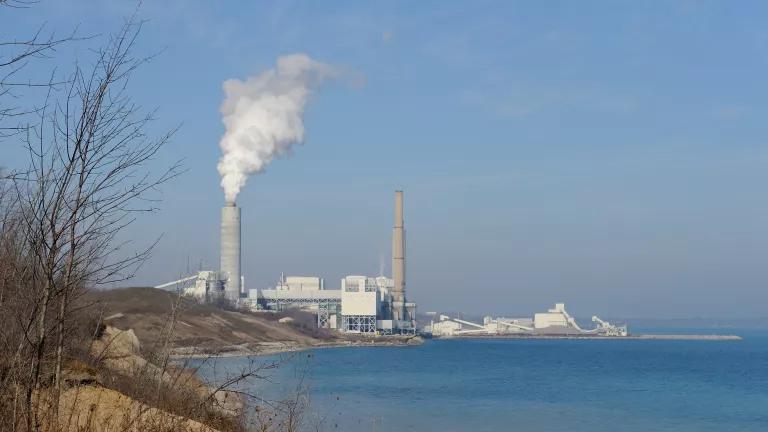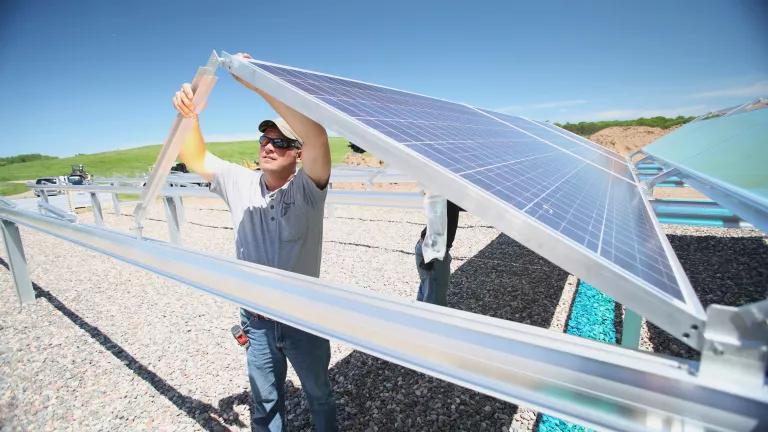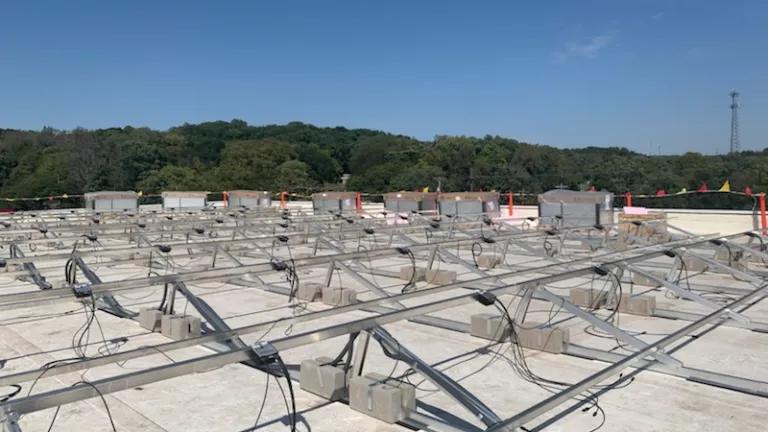Illinois One Step Closer to Forging Its Clean Energy Future
The Climate and Equitable Jobs Act will create thousands of good-paying jobs, curb air pollution, and address the climate crisis—all while directing the benefits to communities most in need.

A wind turbine rotor being raised into position at the Big Sky Wind Farm in Bureau County, Illinois
The Climate and Equitable Jobs Act will create thousands of good-paying jobs, curb air pollution, and address the climate crisis—all while directing the benefits to communities most in need.
The Illinois General Assembly passed the Climate and Equitable Jobs Act today, the most transformative and equitable energy bill in state history—one that would make Illinois the first Midwest state to move to 100 percent fossil fuel–free energy by 2045.
The Climate and Equitable Jobs Act lays out a robust plan to expand Illinois’s clean energy economy, decarbonize the electricity sector, protect utility customers from inflated energy costs, curb deadly air pollution, and address the climate crisis. According to the legislation, most of Illinois’s coal generation and gas plants will be replaced with renewable energy by 2038 and 2045, respectively. The state will also close the Prairie State coal plant—the country’s seventh-largest carbon polluter—by 2045.
“This is the kind of monumental shift that our country needs to make if we’re going to stand a chance against climate change,” says J.C. Kibbey, an Illinois-based NRDC clean energy advocate. “Illinois is going to be the first state in the Midwest to make this giant leap forward.”
Prior to the COVID-19 pandemic, clean energy was booming in the state, growing at 5.5 percent per year—and even faster in rural Illinois even as the overall number of jobs declined. Energy efficiency alone already brings $700 million annually to Illinois’s economy. The Climate and Equitable Jobs Act promises to build on that momentum and bring a wave of new jobs to start high-quality careers in sectors like solar, wind, and energy efficiency to aid in economic recovery from COVID-19. “Illinoisans recognized the writing on the wall,” Kibbey says. “There’s not a lot of time to act on climate and investing in clean energy is key to a just and robust economic recovery.”
But what makes the Climate and Equitable Jobs Act stand out is how it commits to fostering equitable economic and job growth across the state. “This legislation started with a diverse set of environmental, labor, consumer advocates and grassroots organizations coming together to address the climate crisis,” Kibbey says. “Illinois is leading the country with a climate action plan that centers equity and economic investments in clean energy to help communities that need them the most.”
Critically, the Climate and Equitable Jobs Act directs these benefits toward low-income communities and communities of color—historically the most burdened by high levels of fossil fuel pollution and yet often excluded from the economic benefits of the energy economy. It sets aside $80 million a year for equity-focused workforce and development programs and $35 million a year toward business development grants. Research shows that 40 percent of Illinoisans who live near a coal-fired power plant are people of color, and 38 percent have low incomes. By committing to the principles of a just transition, the act also invests in those displaced by the declining fossil fuel industry while creating a deliberate plan to move away from polluting gas and coal.
“The bill can serve as a national example of how a transition to clean energy can create jobs, protect communities, and hold utilities accountable,” Kibbey says. “We hope that other states will be inspired by our success.”



